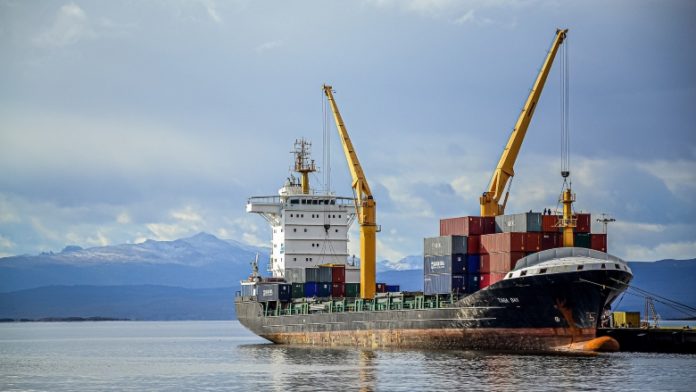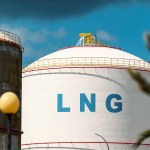Wars and pandemics — geopolitical and global health crises causing widespread suffering and death — have the side effect of hiking profits in certain industries. Wars inflate returns for defense contractors. The pandemic was a bonanza for certain pharmaceutical companies.
Shipowners have profited from both. Container-line owners made fortunes during COVID. Russia’s invasion of Ukraine buoyed rates for tanker companies.
Now there’s a new geopolitical crisis — the Israel-Hamas war in response to Saturday’s terrorism attack by Hamas — and clear potential for escalation to a regional conflict.
It may seem insensitive, but it’s the job of shipping analysts and shipowner executives to provide their views on how military conflicts affect their markets and stock prices. On Tuesday, three days after war was officially declared in the Middle East, shipping analysts and executives convened at the Capital Link New York Maritime Forum in Manhattan’s Upper East Side — and there was no avoiding the subject.
“If we were talking last week, it would have been: We’ve got a war in central Europe. Well, now we’ve got a war in the Middle East,” said Robert Bugbee, president of Scorpio Tankers (NYSE: STNG).
“What could happen in the Middle East, regrettably on a humanitarian basis, is positive for the [tanker] rate structure, the same as it was with the Russian war.”
According to Nikolas Tsakos, CEO of tanker company Tsakos Energy Navigation (NYSE: TNP), “We are trained in shipping to be able to adapt to geopolitical events. And here we are again, back to the drawing board. We’ve had three crises, one after the other. COVID, then the Ukrainian situation, now trouble in the Middle East.”
Bottom-line implications vary by shipping sector. Container and dry bulk shipping are less directly exposed to possible effects than crude and product tankers and liquefied natural gas (LNG) and liquefied petroleum gas (LPG) carriers.
Container shipping and dry bulk shipping
The war in Israel, if it expands beyond the country’s borders, poses risks to two key shipping choke points: the Suez Canal, a key waterway for all types of commercial vessels, including container ships, and the Strait of Hormuz, which is pivotal to oil and gas shipping.
The Suez Canal is an example of an “open choke point,” i.e., one that ships can go around. If the canal is ever shut by a regional conflict (as it was in conflicts involving Israel in 1956 and in 1967-1975), ships can take the longer route around Africa, reducing available vessel capacity, a positive catalyst for shipping rates.
Israel itself is a small market for container shipping. Israel’s main ports of Ashdod and Haifa handle just 0.4% of global throughput, “and the threat of disruptions to the container trade flow through the Med region remains limited,” said Linerlytica on Monday.
Zim (NYSE: ZIM), the world’s 10th-largest ocean carrier, is based in Haifa. The company confirmed Wednesday that there could be disruptions to its services to Israel and that it will be charging a war risk premium.
Zim has employees that will be called for military duty, and the government of Israel has a “golden share” or “special state share” in the company that ensures the government’s access to Zim’s fleet “in a time of emergency or for national security purposes.” (This clause is not expected to have any effect on market capacity.)
The broader issue for container shipping is the same one facing dry bulk shipping, another segment that is not acutely affected by the war in Israel: Both shipping segments are heavily exposed to the health of the global economy.
“We could see a very high spike in the price of oil at some point, which could be recessionary,” warned John Wobensmith, CEO of dry bulk carrier owner Genco Shipping & Trading (NYSE: GNK).
Crude oil shipping
The Strait of Hormuz, unlike the Suez Canal, is a “closed choke point” — i.e., you can’t go around it. Enormous volumes of oil and gas exports rely on the strait being open.
If cargoes were forced to circumvent the Suez Canal, it would be positive for shipping demand measured in ton-miles (volume multiplied by distance) because it would increase the miles in the ton-mile equation, while tons would remain constant. A closure of the Strait of Hormuz would shut in volumes that could not be fully replaced, a negative for ton-mile demand because the tons lost would exceed the miles gained from partial replacement volumes.
A much more likely near-term scenario for tankers is a crackdown by the U.S. on Iranian exports, which could be a positive for mainstream tanker rates. The Biden administration is being criticized for not enforcing Iran sanctions aggressively enough, allowing Iran to profit from exports to China, and thus provide financial support to Israel’s enemies.
“There has recently been a more relaxed stance toward Iran by the U.S. government, which has permitted Iran to increase its crude exports by over 600,000 barrels per day since the beginning of the year,” ship brokerage BRS said on Monday. “If the Biden administration was to crack down on Iran due to its links with Hamas, this would likely propel oil prices higher.”
BRS noted that “lower Iranian crude exports could see Saudi Arabia relaxing its additional voluntary cuts to fill the gap.”
This would be a positive for spot rates for mainstream crude tankers that carry Saudi crude and are not involved in the Iranian trade.
LPG shipping
Owners of LPG carriers known as VLGCs (very large gas carriers) could also see higher freight rates.
VLGCs transport LPG (propane and butane) that competes with naphtha as a feedstock for Asian steam crackers. Higher oil prices in the wake of the Middle East war would push up naphtha prices, making naphtha less competitive with LPG, increasing demand for imported LPG in Asia and thus demand for VLGC transport.
Ted Young, CFO of Dorian LPG (NYSE: LPG), said at the Capital Link event: “If [geopolitical issues] continue to drive oil prices higher, that has historically been good for our business, as long as oil prices don’t go up too high and choke off demand.”
Refined products shipping
Spot rates for product tankers — ships that carry cargoes such as diesel, gasoline and jet fuel — are already higher than normal for this time of year, while inventories are low, setting the stage for the new geopolitical crisis to push rates higher still over the winter, according to Bugbee.
“You’ve got inventories entering this winter that are at the same level they were exiting winter last year, which was one of the warmest winters on record. This winter may not be as mild as last year’s,” he said.
“Underlying demand is still rising on a post-COVID basis. Consumption of gasoline, jet fuel and everything else is up. So, the world is vulnerable to carbon shortages.
“On the trading desks, it’s all about fear and greed,” said Bugbee. “If you put fear in there, combined with a normal winter, rates can of course go higher. The disturbance in the Middle East, by itself, should push rates way above [where they are now].”
LNG shipping
Meanwhile, countries buying LNG are looking to add more import facilities — floating storage and regasification units (FSRUs) — and diversify their supply base. The war in the Middle East should intensify these trends.
According to Richard Tyrell, CEO of LNG carrier owner Cool Company (NYSE: CLCO), “What is happening in Israel is terrible. If it escalates, it would have an impact on the LNG business. What it does now is put everyone very much on edge when it comes to energy security.
“People are very focused now on diversifying their supplies. If you are China, for example, you don’t want to have all your LNG supplies coming from Qatar, because of the risk of one particular place being cut off. People are looking at energy in a geopolitical way, to reduce their risks, by having supplies from multiple places. That’s why LNG shipping is so essential to this market.”
According to Art Regan, CEO of Energas Infrastructure, which owns FSRUs, “Everyone is reevaluating what their energy matrix should look like for the next 10-20 years. It’s not about the energy transition, it’s about energy security.
“It’s because of what happened in Ukraine and what’s happening globally at the moment,” said Regan.
“There were 11 regas [FSRU] units secured in Europe last year, about three to four times what there would be normally. And the concern is spreading. We’re seeing it in Asia and in South America, Brazil in particular. Everybody is on edge and wants to know how to provide power and electricity to their citizens.”
Shipping stocks
Stocks of crude tanker, product tanker, LPG carrier and LNG carrier owners are all up moderately since the terror attacks and declaration of war in Israel.
“That’s one of the beauties of shipping, right? In a way, it’s a hedge,” said Gregory Lewis, a shipping analyst at BTIG, at the Capital Link event. “Disruptions and dislocations generally tend to be good for shipping. In periods of geopolitical uncertainty, there are definitely worse things to own than tanker stocks.”
At the same time, there is broader market uncertainty capping shipping stock upside until freight rates truly take flight, according to Bugbee.
“If you look at the little picture of the product tanker market, you can be super-confident. But how confident can you be about the big picture of the world in general and the world’s economic position? It starts to get a bit grey.
“The question now is not necessarily: What is the shipping risk? The question is: What is the geopolitical risk of the world? What happens in the next couple of years?
“You’ve got to have some sympathy [for investors] because there are a lot of things to be worried about. It’s pretty unpredictable, with what could happen in the Middle East. So, we’ve got this overhang of: Will the world get through this period? Will it be a soft landing or a hard landing?
“Right now, this uncertainty is overwhelming the actual industry fundamentals [in stock pricing]. This might be the case until you get a forced capitulation when rates move up. Strong rates will cure everything.”
Source: Hellenic Shipping News





